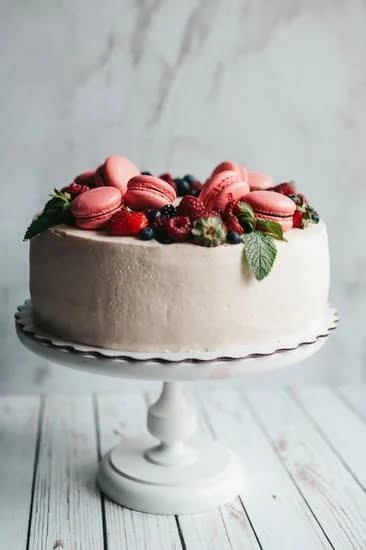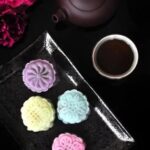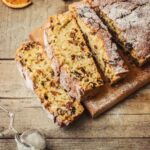Easter is a time of celebration, and one of the most beloved traditions of this holiday revolves around the making and decorating of Easter cakes. These delicious confections hold a special place in the hearts of people from various cultures, serving as both a culinary delight and a symbol of the season. From the intricate designs to the meaningful decorations, decorated Easter cakes are an essential part of Easter festivities.
The tradition of Easter cakes spans across different cultures, each with its own unique customs and significance. As we delve into the world of Easter cakes, it becomes evident that these delectable treats carry with them a rich history and have evolved over time to become an integral part of Easter celebrations. The preparation and decoration of these cakes often hold deep symbolic meaning, representing various aspects of religious and cultural significance.
In this article, we will take a closer look at the tradition of Easter cakes, uncovering their historical roots and exploring their importance in different societies. We will also discuss the meaningful decorations adorning these cakes and provide mouth-watering recipes for classic Easter cakes along with creative ideas for personalized touches.
Whether you’re looking to learn more about the cultural traditions surrounding Easter cakes or seeking inspiration for baking and decorating your own, this article aims to guide you through the beauty and tradition of decorated Easter cakes.
Meaningful Easter Cake Decorations
Easter cakes are not just delicious treats, but they also hold significant cultural and religious symbolism. One of the most important elements of Easter cake tradition is the decorations. These decorations often have deep meanings and can vary widely from one culture to another.
Symbolism Behind Traditional Easter Cake Decorations
Traditional Easter cake decorations often include symbols such as crosses, lambs, chicks, and eggs. These decorations are not only visually appealing but also carry deep religious meanings. For example, the cross represents the crucifixion and resurrection of Jesus Christ, while lambs symbolize innocence and sacrifice. Chicks and eggs represent new life and rebirth, which ties into the theme of Easter as a celebration of new beginnings.
Religious Significance of Specific Cake Decorations
In many Christian cultures, certain decorations on Easter cakes are specifically tied to religious narratives. For example, in Eastern Europe, it is common to find a sugary or marzipan lamb placed on top of an Easter cake, representing the “Lamb of God” in Christianity.
In some cases, red-colored icing is used to symbolize the blood of Christ shed on the cross. Understanding the significance behind these specific cake decorations adds depth to the tradition of baking and decorating Easter cakes.
As families gather to celebrate this special holiday, understanding the meanings behind these traditional decorations can enrich their experience and add a deeper layer of significance to their celebrations surrounding decorated easter cakes.
Delicious Easter Cake Recipes
When it comes to Easter celebrations, one of the most beloved traditions is enjoying a slice of beautifully decorated Easter cake. From classic fruitcakes to decadent chocolate creations, there are endless options for creating delicious and visually stunning desserts to mark this special occasion. Whether you are a baking enthusiast or simply looking to try your hand at crafting an impressive Easter treat, there are plenty of mouth-watering recipes to choose from.
Traditional Simnel Cake Recipe
One of the most iconic Easter cakes is the traditional Simnel cake. This rich fruitcake is adorned with 11 marzipan balls that represent Jesus’ apostles, excluding Judas. To make this timeless recipe, start with a mixture of dried fruits such as currants, raisins, and mixed peel.
Combine these with flour, butter, eggs, and a hint of mixed spice for a fragrant and flavorful cake. Once baked and cooled, decorate the top with golden marzipan and carefully place the 11 marzipan balls as a meaningful and decorative touch.
Decadent Chocolate Easter Cake Recipe
For those with a love for all things chocolate, an indulgent chocolate Easter cake is the perfect choice. Start by preparing a moist chocolate sponge using high-quality cocoa powder and buttermilk for added richness. Once baked and cooled, layer the cake with velvety chocolate ganache or frosting for an irresistible finish. To really impress your guests, consider decorating the cake with delicate chocolate shavings or handcrafted chocolate eggs for an extra touch of elegance.
Springtime Carrot Cake Recipe
Another popular choice for Easter festivities is the classic carrot cake. Bursting with warm spices and sweet grated carrots, this moist cake is often paired with tangy cream cheese frosting for a delightful contrast in flavors. Consider incorporating chopped nuts or plump sultanas into the batter for added texture and depth of flavor. When it comes to decorating this festive dessert, think about adorning it with edible flowers or whimsical fondant carrots to truly capture the spirit of springtime.
With these delectable Easter cake recipes at your disposal, you can confidently embark on creating a memorable dessert for your celebration while adding personal touches to elevate its visual appeal.
Creative Easter Cake Designs
When it comes to decorating Easter cakes, there are countless creative and innovative ideas to consider. From classic designs to more modern and artistic approaches, the possibilities for Easter cake decorations are endless. Here are some inspiring ideas for achieving stunning cake designs:
- Use a variety of colorful icing and fondant to create intricate floral patterns or geometric designs on the cake surface.
- Incorporate edible flowers, such as daisies or violets, as decorative elements for a fresh and natural look.
- Try experimenting with different textures and techniques, such as marbling, watercolor effects, or piping intricate lace patterns onto the cake.
With these creative approaches in mind, you can turn a simple Easter cake into a work of art that reflects the beauty and joy of the holiday.
In addition to traditional decorations like chocolate eggs or sugar-coated almonds, consider incorporating personalized touches that hold special meaning for you and your loved ones. Whether it’s a monogrammed initial made from piped frosting or a fondant replica of a family pet, adding personal elements to your decorated Easter cake can make it truly unique and memorable.
Specialty Easter Cake Ingredients
Easter cakes are a beloved tradition in many cultures, and part of what makes them so special is the use of unique and traditional ingredients. From fragrant spices to symbolic add-ins, Easter cake recipes often feature ingredients that hold special significance during this season of celebration.
Here are some specialty Easter cake ingredients commonly used in traditional recipes:
- Spices: Cinnamon, nutmeg, and cloves are popular choices for adding warmth and depth to Easter cake flavors.
- Dried fruits: Raisins, currants, and candied citrus peel are often included in Easter cakes, with each fruit carrying its own symbolism related to the holiday.
- Nuts: Almonds, walnuts, and hazelnuts are frequently found in Easter cake recipes, providing a satisfying crunch and rich nutty flavor.
- Honey: In some cultural traditions, honey is used as a sweetener in Easter cakes, symbolizing sweetness and joy during the holiday.
Additionally, certain specialty ingredients such as saffron or orange blossom water may be used in specific regional variations of Easter cake recipes. These unique ingredients add layers of complexity to the flavors of the cakes and showcase the diversity of cultural influences on Easter baking traditions.
By incorporating these specialty Easter cake ingredients into your baking, you can infuse your creations with deep historical roots and meaningful symbolism. Whether you’re following a classic recipe or putting your own modern twist on an Easter cake, using traditional ingredients can help you connect with the cultural and religious significance of this time-honored tradition.
Cultural Easter Cake Traditions
Easter is a time of celebration and reflection for people around the world, and one of the most beloved traditions associated with this holiday is the baking and decorating of Easter cakes. Different cultures have unique customs when it comes to creating and enjoying these delectable treats, each with its own special significance.
For example, in Greece, the traditional Easter cake known as “tsoureki” is a sweet bread made with red colored hard boiled eggs inserted into the dough. This symbolizes the blood of Christ and new life. In Russia, “kulich” is a tall, cylindrical Easter cake that is often decorated with sugared almonds or intricate icing designs. It’s customary to bring these cakes to church on Easter Sunday for a blessing by the priest.
In Italy, “colomba di Pasqua” (Easter dove) is a cake shaped like a dove, which represents peace and resurrection. The top is typically sprinkled with pearl sugar and almonds to give it a crunchy texture after baking. These are just a few examples of how diverse cultures have their own unique ways of incorporating Easter cakes into their traditions.
| Cultural Tradition | Description |
|---|---|
| Greek Tsoureki | Sweet bread with red colored hard boiled eggs symbolizing new life |
| Russian Kulich | Tall cylindrical cake often adorned with sugared almonds or intricate icing designs |
| Italian Colomba di Pasqua | Dove-shaped cake representing peace and resurrection, topped with pearl sugar and almonds |
Personalizing Your Easter Cake
Decorating Easter cakes is not only a fun and creative activity, but it also allows for personalization and customization to reflect individual tastes and traditions. From colorful sugar flowers to intricately piped designs, adding a personal touch to your Easter cake can make it even more special. Whether you’re baking a traditional Easter fruitcake or a modern carrot cake, there are countless ways to personalize your creation.
One popular way to personalize Easter cakes is by incorporating meaningful decorations that hold significance for you and your family. For example, if you have a cherished family recipe, consider using specific toppings or designs that have been passed down through generations. Additionally, incorporating religious symbols such as crosses or lambs can add a deeper spiritual meaning to your Easter cake, especially for those celebrating the religious significance of the holiday.
When personalizing your Easter cake, it’s essential to consider the preferences of those who will be enjoying it. Take into account any dietary restrictions or flavor preferences, as well as cultural customs that may influence the choice of ingredients and decorations. Whether you opt for a classic design or a more contemporary approach, infusing your Easter cake with personal touches is sure to make it an unforgettable centerpiece for your holiday celebration.
| Ingredient | Significance |
|---|---|
| Edible flowers | Symbolize new life and rebirth |
| Lemon zest | Represents the freshness of spring |
| Almond extract | A symbol of hope and good fortune |
Showcasing Decorated Easter Cakes
Easter is a time of celebration and tradition, and one of the most beloved traditions is the baking and decorating of Easter cakes. From elaborate designs to simple yet meaningful decorations, Easter cakes hold a special place in the hearts of many cultures around the world. The artistry and creativity displayed in decorated Easter cakes are not only visually stunning but also meaningful, often symbolizing rebirth, renewal, and new beginnings.
One of the most significant aspects of showcasing decorated Easter cakes is the opportunity to highlight the creativity and artistry of cake decorators. From intricate icing designs to delicate fondant sculptures, Easter cakes offer a canvas for bakers to express their talents and passion for their craft. Whether it’s a traditional religious symbol or a whimsical springtime motif, each decorated Easter cake tells a unique story that captures the essence of this joyous holiday.
In recent years, social media platforms have become a showcase for stunning examples of decorated Easter cakes. Bakers from around the world share their creations, inspiring others with their innovative designs and techniques.
This virtual community has created a platform for cake decorators to display their skills and spread joy during the Easter season. Whether it’s through online tutorials, step-by-step guides, or simply sharing photos of their masterpieces, these talented individuals have contributed to keeping the tradition of beautifully decorated Easter cakes alive.
Conclusion
In conclusion, Easter cakes hold a significant place in the traditions of various cultures around the world. From their rich history and evolution to the meaningful decorations that adorn them, Easter cakes are a symbol of celebration, renewal, and joy during the Easter season.
The symbolism behind traditional Easter cake decorations adds depth and meaning to these delectable treats. Whether it’s the use of pastel colors to represent springtime or the incorporation of religious symbols such as crosses or lambs, every decoration carries a story and significance that enriches the Easter cake tradition.
As we celebrate this special time of year, it’s important to embrace the beauty and tradition of decorated Easter cakes. Whether through mouth-watering recipes, innovative designs, or personal touches that reflect individual creativity, Easter cakes serve as a canvas for artistic expression and cultural appreciation. Let us continue to cherish and honor the tradition of decorated Easter cakes as we come together to celebrate this joyous occasion.
Frequently Asked Questions
What Cake Is Traditionally Eaten at Easter?
The cake traditionally eaten at Easter is the Easter Bunny Cake. This cake is typically shaped like a bunny and decorated with frosting, candies, and other festive decorations to celebrate the holiday.
How to Decorate an Easter Egg Cake?
Decorating an Easter Egg Cake can be a fun and creative activity. Start by baking a round cake and then use different colored frostings to create patterns and designs resembling Easter eggs. You can also use candy or edible glitter for added flair.
How to Decorate an Easter Basket Cake?
Decorating an Easter Basket Cake involves creating a cake that looks like a basket filled with colorful eggs and other treats. Start by baking a rectangular cake, then use frosting to create the look of a woven basket. Add small egg-shaped candies or fondant eggs on top to complete the festive look.

Welcome to our cake decorating blog! My name is Destiny Flores, and I am the proud owner of a cake decorating business named Cake Karma. Our mission is to provide delicious, beautiful cakes for all occasions. We specialize in creating custom cakes that are tailored specifically to each customer’s individual needs and tastes.





